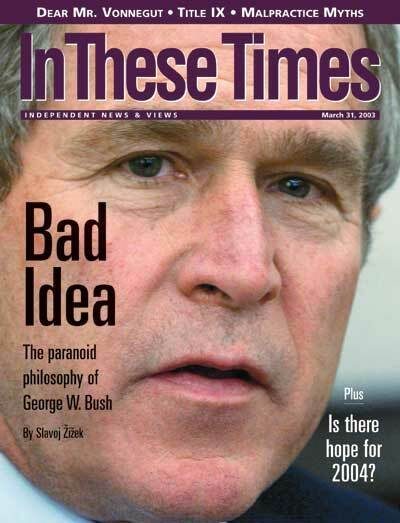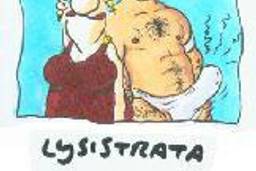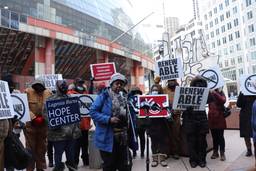The arts community in New Jersey was under no illusions that the 2004 fiscal year would be a pleasant one. Currently laboring under a staggering $5 billion budget deficit, New Jersey, like nearly every state in the union, faces drastic belt-tightening in the upcoming funding cycle.
But no one was expecting what they got when Gov. James McGreevey, a Democrat, unveiled his proposed budget last month: no funds at all for the state’s Arts Council.
“It was very shocking,” says Ann Marie Miller, executive director of the group ArtPRIDE. “The governor has been very vocal in his support of the arts throughout the state.” McGreevey, during his 2001 campaign, “had told us that he wanted to give us a blueprint for increasing funding,” Miller explains.
To the contrary, if McGreevey gets his way when the budget goes into effect on July 1, the council’s entire $18 million budget will be eliminated, along with those of both the state’s Cultural Trust and its Historical Commission.
This puts New Jersey in the company of Missouri, where Democratic Gov. Bob Holden has likewise proposed that the state make do without funding for the Missouri Arts Council (MAC). In Arizona, the legislature is currently toying with a similar complete defunding of the arts.
In fact, arts budgets are on the ropes all over the country. Washington Gov. Gary Locke, a Democrat facing a $2 billion deficit, has proposed cutting $2.2 million from the Washington State Arts Commission, or 39 percent of its budget. Gov. Gray Davis’s proposal in California would more than halve the arts budget there.
To be sure, it is an extraordinarily difficult time for state budgets. In the mid- to late ’90s, the states enjoyed healthy revenue streams and almost universally cut taxes and increased spending, including on programs mandated by the federal government (like Medicaid and standardized testing). Now, as the economy enters a second year of doldrums, the states—49 of which are constitutionally required to keep a balanced budget, unlike the federal government—are paying the price for their earlier optimism.
Even Kimber Craine, communications manager at the National Assembly of State Arts Agencies, has some sympathy for governors and legislatures forced to make hard choices about arts funding. “It’s a particularly awful time,” Craine says. “These budget deficits are huge, and states just have no idea where they’re going to find the money.”
Crane points to California, which has a deficit currently hovering around $35 billion. “Even if they shut down the entire state government, just laid everybody off, they couldn’t close that budget gap. … The states are in their worst financial condition since World War II.”
Nor does the horizon look particularly rosy, thanks to the federal budget policy being pursued by the Bush administration. With the president calling not only for elimination of the dividend tax, but an acceleration of the 2001 tax cuts, states are not likely to see more revenue any time soon. Throw in the fact that the federal government has long made a habit of mandating state programs (think last year’s No Child Left Behind Act) without adequately funding them, and the states are in big trouble.
On February 24, the president told a delegation from the National Governors Association that help is definitely not on the way. “We’ve got an issue with our own budget, and you’ve got issues with your budgets,” the president said.
In the meantime, all that the state arts councils are asking is that governors and legislators not make them suffer disproportionately, especially considering their budgets typically represent such a tiny portion of state expenditures in the first place. Most of all, arts advocates are hopeful that states keep in mind the tremendous economic impact the arts have on their communities. Says Arts Council Executive Director Norree Boyd: “A symphony is not just a symphony playing a symphony in a symphony hall.”
But no one was expecting what they got when Gov. James McGreevey, a Democrat, unveiled his proposed budget last month: no funds at all for the state’s Arts Council.
“It was very shocking,” says Ann Marie Miller, executive director of the group ArtPRIDE. “The governor has been very vocal in his support of the arts throughout the state.” McGreevey, during his 2001 campaign, “had told us that he wanted to give us a blueprint for increasing funding,” Miller explains.
To the contrary, if McGreevey gets his way when the budget goes into effect on July 1, the council’s entire $18 million budget will be eliminated, along with those of both the state’s Cultural Trust and its Historical Commission.
This puts New Jersey in the company of Missouri, where Democratic Gov. Bob Holden has likewise proposed that the state make do without funding for the Missouri Arts Council (MAC). In Arizona, the legislature is currently toying with a similar complete defunding of the arts.
In fact, arts budgets are on the ropes all over the country. Washington Gov. Gary Locke, a Democrat facing a $2 billion deficit, has proposed cutting $2.2 million from the Washington State Arts Commission, or 39 percent of its budget. Gov. Gray Davis’s proposal in California would more than halve the arts budget there.
To be sure, it is an extraordinarily difficult time for state budgets. In the mid- to late ’90s, the states enjoyed healthy revenue streams and almost universally cut taxes and increased spending, including on programs mandated by the federal government (like Medicaid and standardized testing). Now, as the economy enters a second year of doldrums, the states—49 of which are constitutionally required to keep a balanced budget, unlike the federal government—are paying the price for their earlier optimism.
Even Kimber Craine, communications manager at the National Assembly of State Arts Agencies, has some sympathy for governors and legislatures forced to make hard choices about arts funding. “It’s a particularly awful time,” Craine says. “These budget deficits are huge, and states just have no idea where they’re going to find the money.”
Crane points to California, which has a deficit currently hovering around $35 billion. “Even if they shut down the entire state government, just laid everybody off, they couldn’t close that budget gap. … The states are in their worst financial condition since World War II.”
Nor does the horizon look particularly rosy, thanks to the federal budget policy being pursued by the Bush administration. With the president calling not only for elimination of the dividend tax, but an acceleration of the 2001 tax cuts, states are not likely to see more revenue any time soon. Throw in the fact that the federal government has long made a habit of mandating state programs (think last year’s No Child Left Behind Act) without adequately funding them, and the states are in big trouble.
On February 24, the president told a delegation from the National Governors Association that help is definitely not on the way. “We’ve got an issue with our own budget, and you’ve got issues with your budgets,” the president said.
In the meantime, all that the state arts councils are asking is that governors and legislators not make them suffer disproportionately, especially considering their budgets typically represent such a tiny portion of state expenditures in the first place. Most of all, arts advocates are hopeful that states keep in mind the tremendous economic impact the arts have on their communities. Says Arts Council Executive Director Norree Boyd: “A symphony is not just a symphony playing a symphony in a symphony hall.”
Please consider supporting our work.

I hope you found this article important. Before you leave, I want to ask you to consider supporting our work with a donation. In These Times needs readers like you to help sustain our mission. We don’t depend on—or want—corporate advertising or deep-pocketed billionaires to fund our journalism. We’re supported by you, the reader, so we can focus on covering the issues that matter most to the progressive movement without fear or compromise.
Our work isn’t hidden behind a paywall because of people like you who support our journalism. We want to keep it that way. If you value the work we do and the movements we cover, please consider donating to In These Times.
Ben Winters is a journalist, arts critic, and playwright living in Brooklyn.






